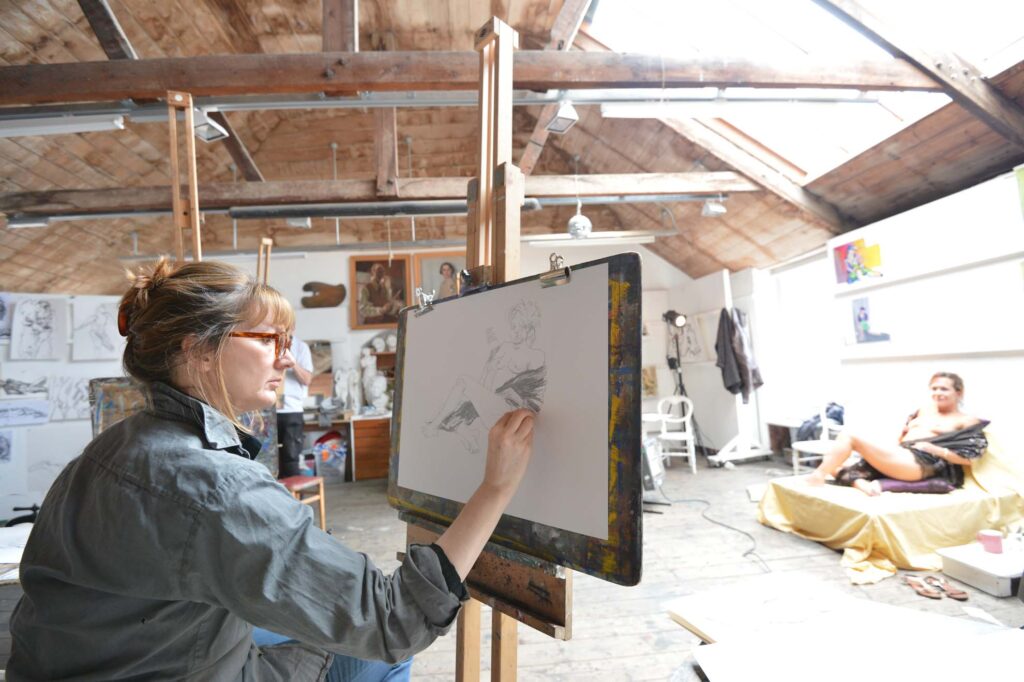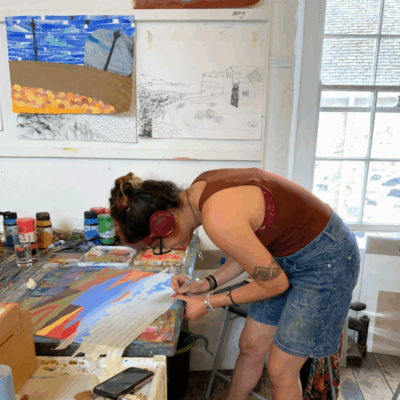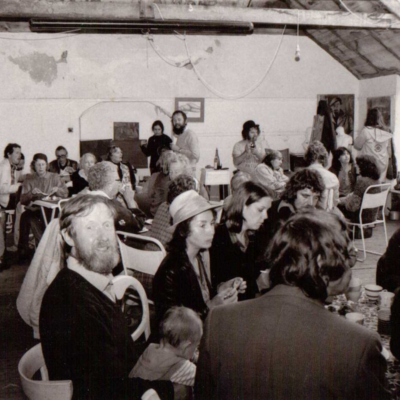What to expect from a still life drawing class
Have you been thinking about attending a still life drawing class but not sure what to expect or what will be expected of you?
No problem! We are fairly experienced when it comes to life drawing, in fact our weekly regular life drawing classes can be dated back to the early 1970s! So, we’ve rounded up the setup and itinerary for a standard class to help give you an idea of how it works.


Setup & Materials
Typically, life drawing classes take place in a studio, with the model at the centre, either standing, sitting, or lying down on a platform. Artists surround the model in a circle or semi-circle enabling them to get different perspectives.
Depending on the type of class, artists will likely work at an easel and for some classes (such as ours), you will be provided with all the necessary materials. In some cases, you will be asked to bring your own, and these materials could include pencils, charcoal, and paper.
The aim is for the environment to be quiet and calm, so typically there will be soft music playing in the background or no music at all.
The Model
Most life drawing models pose nude, as this allows the artist to focus on the natural forms of the human body. However, some classes also offer clothed figure drawing.
There is always an aim to use diverse models, so they can vary greatly in age, gender, body type, and ethnicity, giving you the opportunity to explore different shapes and forms.
Poses by the model vary in length. You may begin with quick, dynamic “gesture drawings” of 1-5 minutes to capture the essence of a pose, followed by longer poses of 10-30 minutes or more, where you can focus on details

Types of Classes
There are two types of classes, guided or open studio. Guided classes, such as life drawing classes at St Ives School of Painting, are taught by an instructor. They may give demonstrations or suggest techniques for capturing proportion, anatomy, shading, or how to break down the figure into basic shapes.
In some open studio classes, especially at advanced levels, the instructor may provide minimal guidance, allowing you to practice freely.
Different Levels of Experience
Beginners: Don’t worry if you’re new to drawing! Life drawing classes often have mixed experience levels, and beginners are encouraged to focus on capturing the general form before diving into details.
Intermediate/Advanced: More experienced artists may focus on fine-tuning anatomy, experimenting with different styles, or working on creating more expressive and dynamic poses.
Tempted to give life drawing a go? We offer bi-weekly sessions at The Island Centre studio in St Ives, Cornwall. You can browse our upcoming classes here: schoolofpainting.co.uk/life-drawing
17/10/2024
Share on
Related Stories

Supporting the Next Generation of Cornish Artists
We’re thrilled to share some exciting news: a new collaboration between three charitable trusts is helping us open our studio doors even wider to young artists across Cornwall. Thanks to the combined generosity of the Roy Ray Legacy Fund, the Wilhelmina Barns-Graham Trust, and – newly joining us this summer – the Little Parc Owles...

Win an art break in St Ives
St Ives School of Painting and Sail Lofts–St Ives have teamed up to offer one lucky art enthusiast and a friend the chance to win an exclusive art break which combines four nights luxury accommodation at Sail Lofts–St Ives with a 3-day art course at St Ives School of Painting. Sail Lofts–St Ives offers an...

The Roy Ray Legacy Fund
Roy Ray attended St Ives School of Painting as a student in the 1960s and was fundamental in its success from the late 1970s to early 2000s. As Principal, he was instrumental in bringing more accessible contemporary art courses and welcomed even more visitors to the St Ives art community. About Roy Ray and St...
